In the heart of the world’s tropical jungles lies a realm teeming with mystery and danger. Among the vibrant foliage and diverse wildlife dwell serpents of remarkable and deadly prowess. These snakes, with their potent venom, have fascinated and alarmed humans for centuries. Understanding these creatures is crucial, not only for safety but also to appreciate the ecological balance they maintain. This article explores the 15 most venomous snakes residing in tropical jungles, providing insight into their unique characteristics and the important roles they play in their ecosystems.
Costa Rican Bushmaster
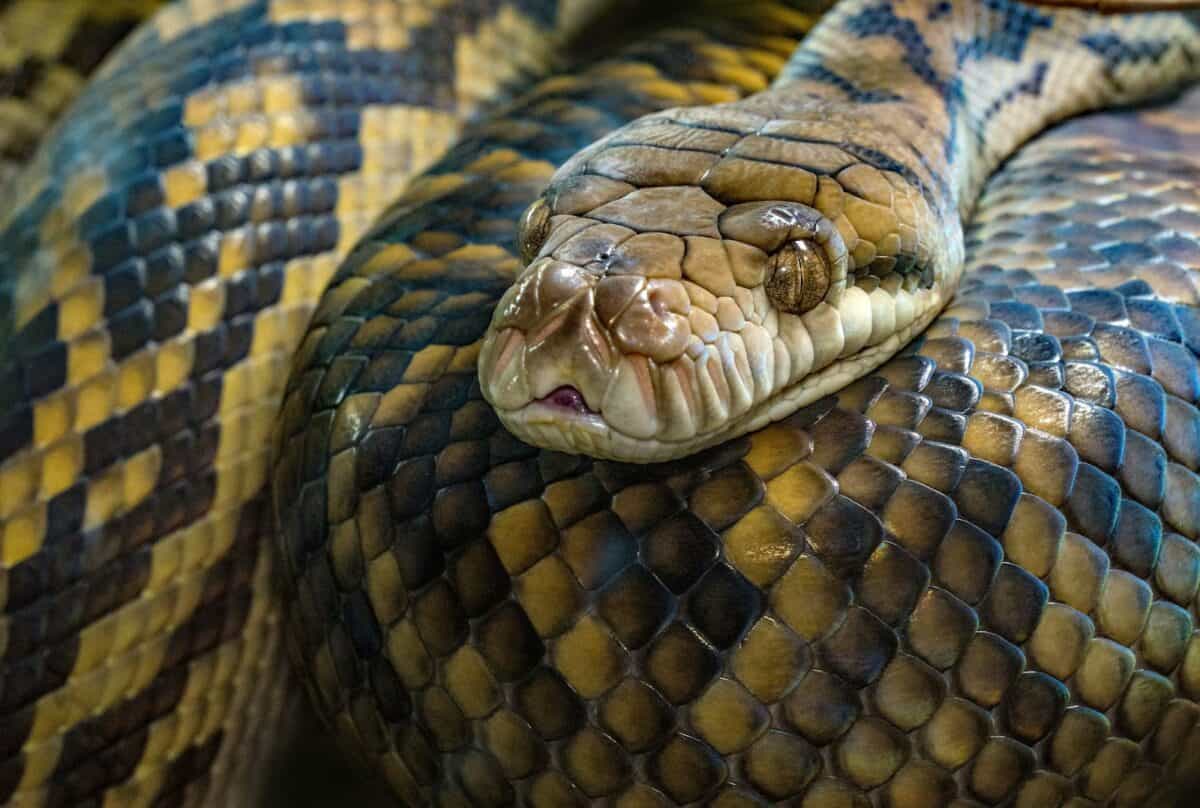
The Costa Rican Bushmaster, also known as “La Lachesis,” is the largest pit viper in the Americas. Found primarily in the dense jungles of Central and South America, this elusive snake uses its impressive size and venomous bite to subdue prey. Its venom is hemotoxic, disrupting blood clotting and causing tissue damage. This snake is mostly nocturnal and uses its heat-sensing pits to hunt at night, preying on small mammals and birds.
Fierce Snake (Inland Taipan)
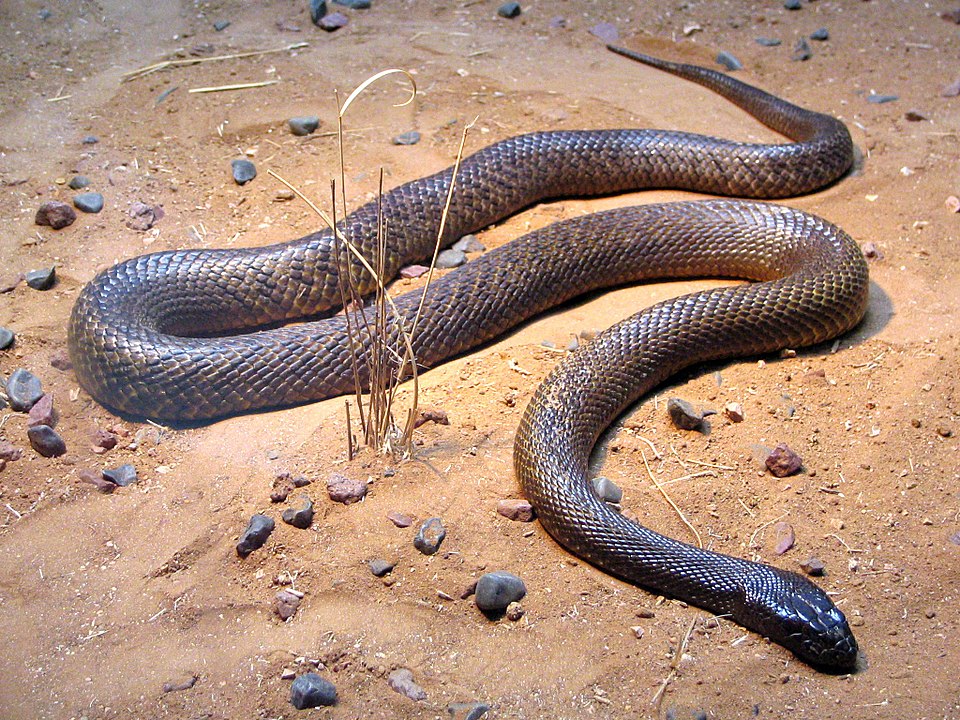
The Inland Taipan, or Fierce Snake, holds the title for the most venomous snake on earth. Despite its potency, it is reclusive and rarely encountered by humans. Inhabitants of Australia’s arid regions, these snakes are adapted to a life of solitude and precision. Their venom contains taipoxin, a powerful neurotoxin that can cause paralysis and death within hours if untreated.
King Cobra
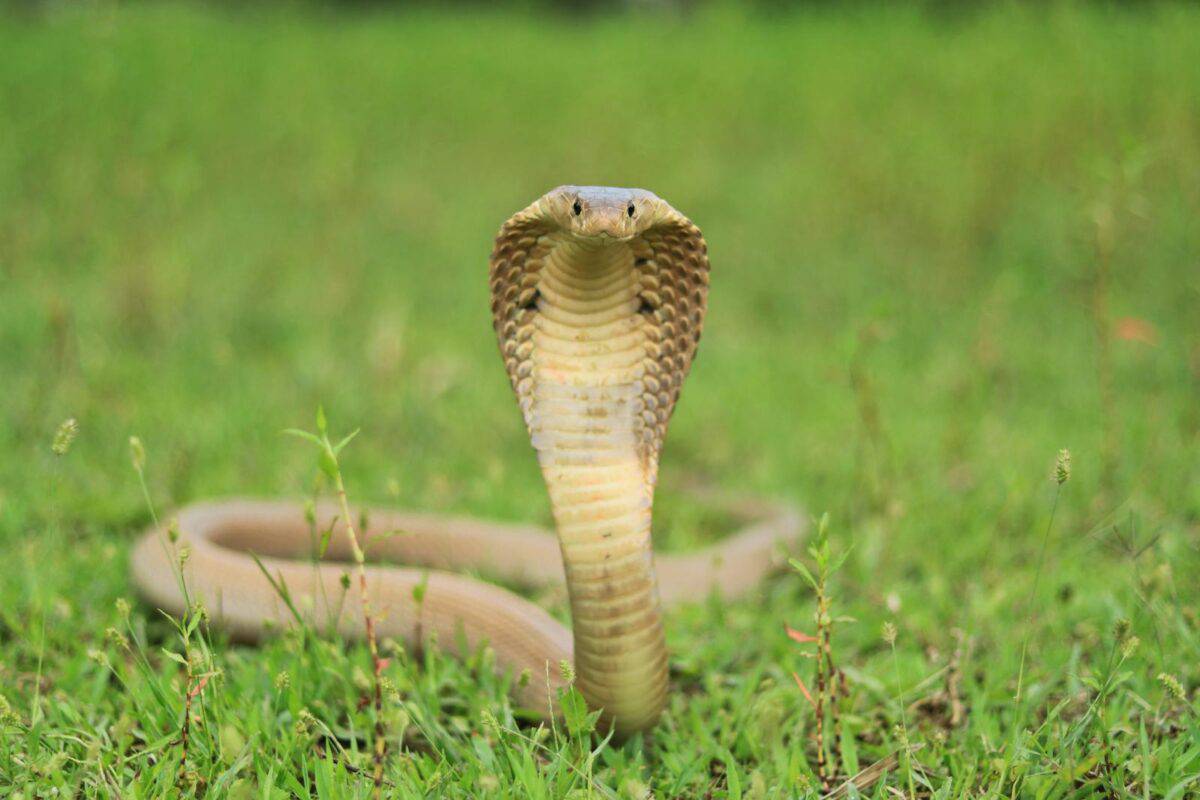
The King Cobra is not only the longest venomous snake in the world but also one of the most revered. Found across the tropical forests of India and Southeast Asia, its venom is primarily neurotoxic, affecting the respiratory centers in the brain. This majestic snake is known for its intelligence and unique nesting behavior, constructing nests and guarding them fiercely until their eggs hatch.
Black Mamba
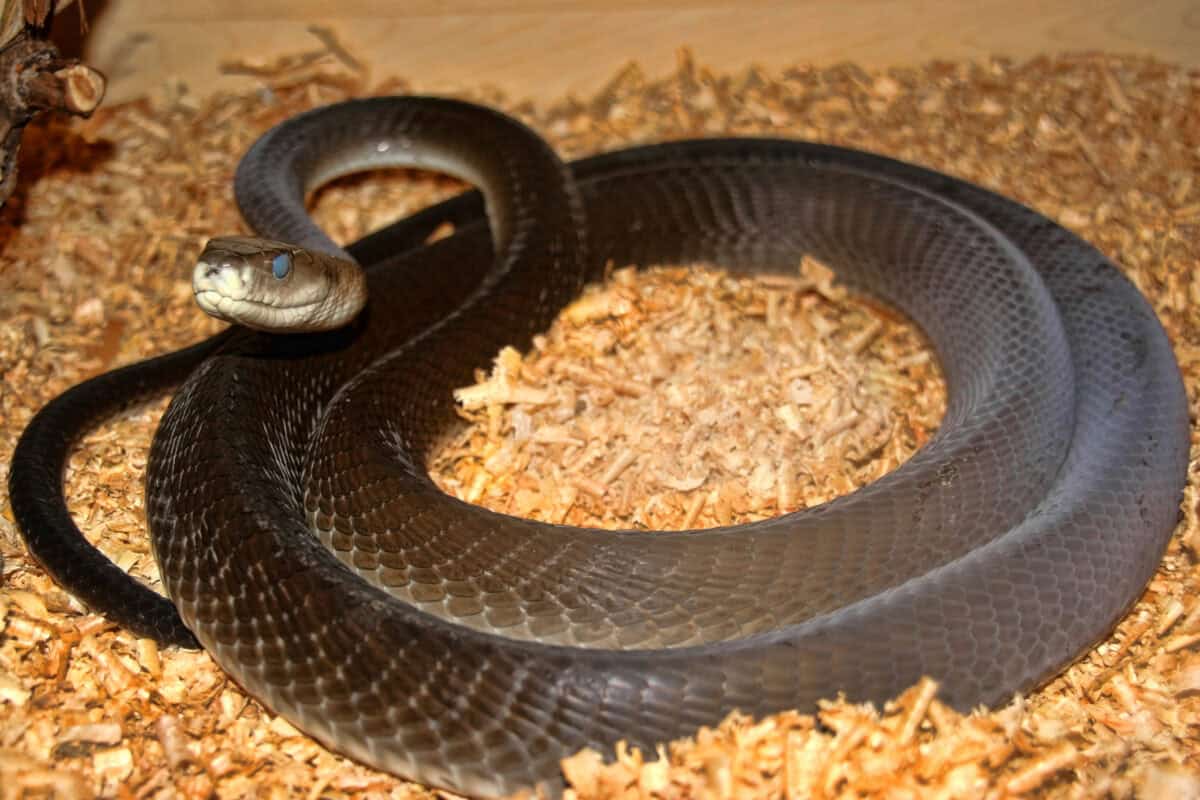
The Black Mamba, with its formidable speed and lethal bite, reigns as Africa’s most notorious snake. Inhabiting savannas and rocky hills, this snake delivers a cocktail of dendrotoxins with its bite, swiftly impacting the nervous system. Known for its aggression when threatened, the Black Mamba can strike multiple times in quick succession.
Gaboon Viper
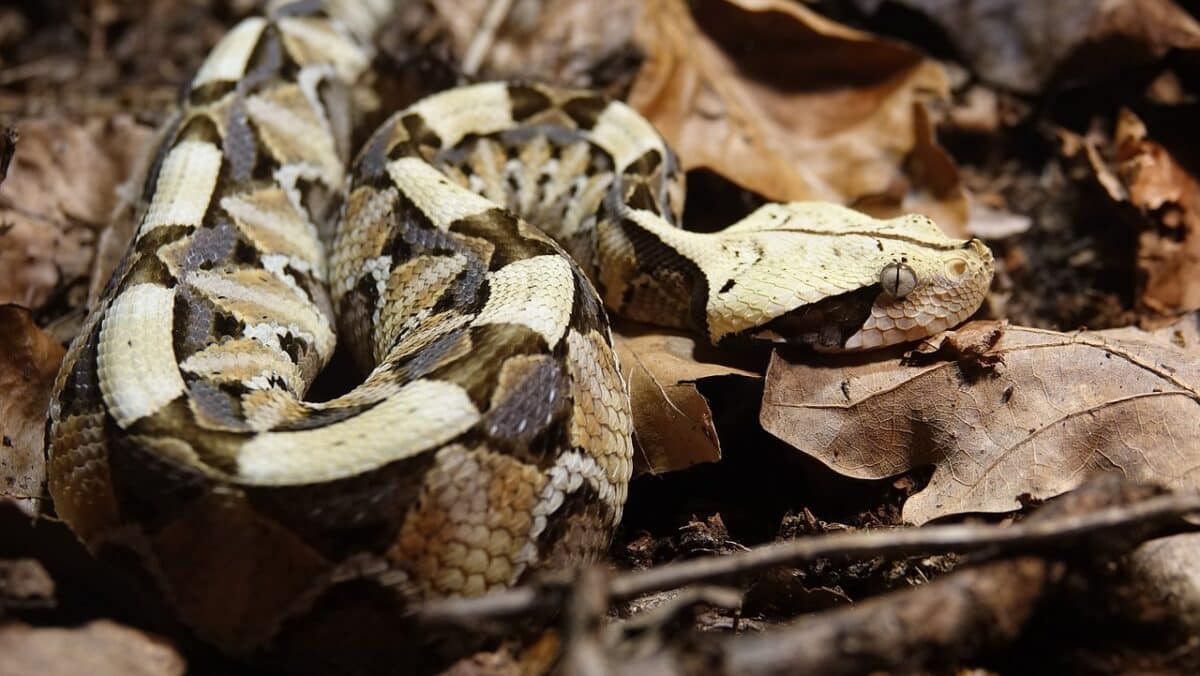
In the lush rainforest floors of West Africa, the Gaboon Viper lies camouflaged with its intricate, leaf-like pattern. This snake, equipped with the longest fangs of any venomous snake, delivers a large dose of cytotoxic venom. However, the Gaboon Viper is generally placid, relying on ambush hunting strategies to capture rodents and birds.
Cottonmouth (Water Moccasin)
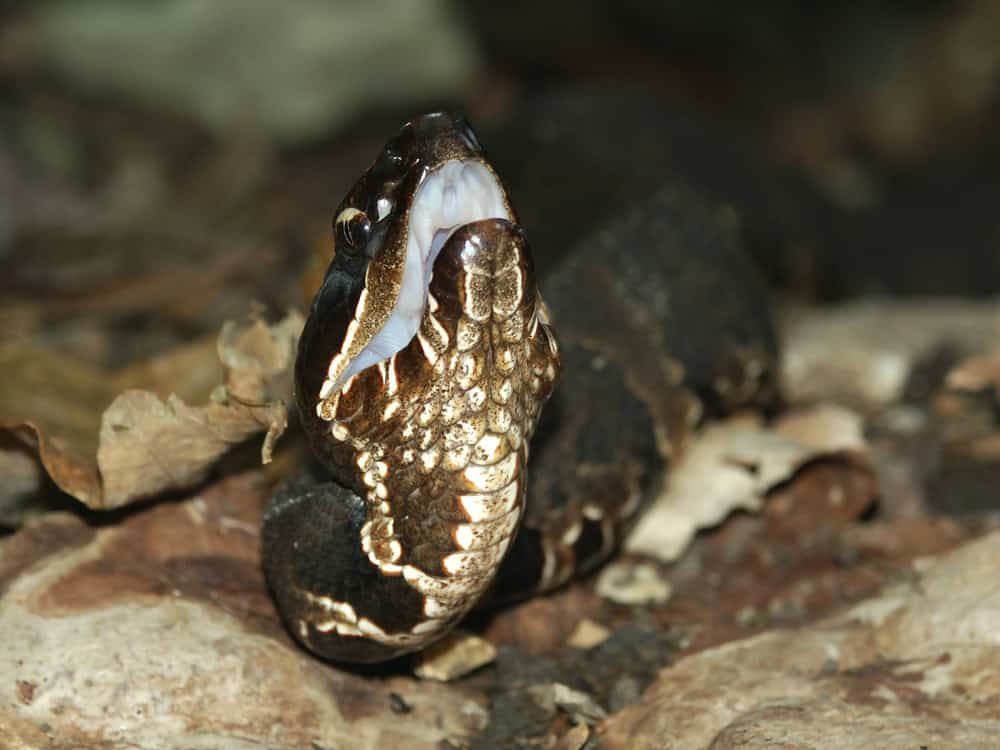
Native to the southeastern United States, the Cottonmouth, or Water Moccasin, is infamous for its defensive display, where it shows off its white mouth lining. Living in swamps and marshes, this semi-aquatic snake has a venom that breaks down tissue and can cause significant pain. Despite its daunting reputation, it often relies on bluffing as a defense before resorting to biting.
Malayan Krait
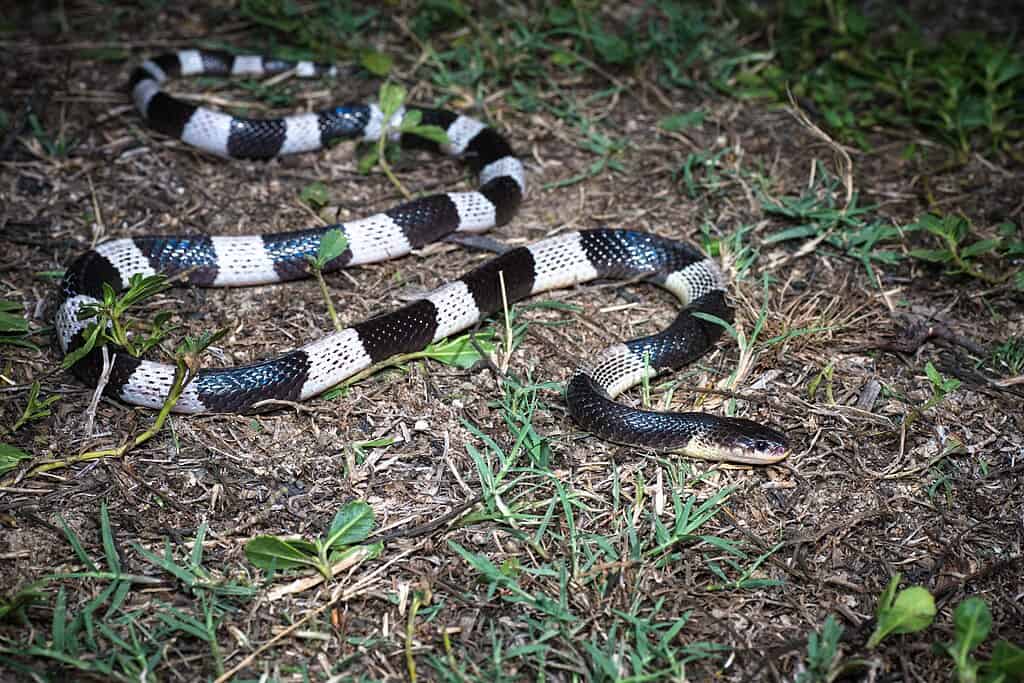
The Malayan Krait, found in Southeast Asian jungles, is a nocturnal snake with a venom potent enough to rival that of the cobra. Its venom contains neurotoxins that induce paralysis. Despite its dangerous bite, this snake is typically shy, often preferring flight over conflict when faced with threats.
Boomslang

The Boomslang, a tree-dwelling snake indigenous to sub-Saharan Africa, is known for its potent hemotoxic venom, which disrupts blood clotting. Interestingly, this snake’s striking fangs are located at the back of its mouth. It is characterized by its excellent vision and is usually non-aggressive, relying on its arboreal adaptations to avoid danger.
Philippine Cobra

Renowned for its ability to spit venom, the Philippine Cobra is a dangerous resident of the tropical jungles of the Philippines. It primarily inhabits low-lying areas with dense vegetation. Its venom is highly neurotoxic, affecting respiratory function and potentially leading to death if medical treatment is not promptly received.
Fer-de-Lance

The Fer-de-Lance, or Bothrops, thrives in the tropical rainforests of Central and South America. It is responsible for a significant number of snakebites in its range. Known for its irritable nature and potent hemotoxic venom, this snake can cause severe tissue destruction and systemic bleeding. It is mainly terrestrial and uses camouflage to ambush prey.
Banded Sea Krait

Although primarily aquatic, the Banded Sea Krait frequents the coastlines and coral reefs of the Indo-Pacific. This venomous sea snake is known for its striking black and white bands. Its venom is potent enough to incapacitate prey quickly, yet the snake remains generally docile, posing little threat to humans unless provoked.
Russell Viper

Russell’s Viper is a widespread snake known for causing numerous bites in its South Asian habitat. It thrives in both agricultural fields and jungles. The snake’s venom possesses a complex mixture of enzymes that damage tissue and affect blood clotting. It is a highly alert and fast-moving snake, usually active at night.
Eastern Coral Snake

With its vibrant red, yellow, and black banding, the Eastern Coral Snake is a striking inhabitant of the southeastern United States. It relies on neurotoxic venom to subdue its victims. Unlike many other vipers, coral snakes are relatively shy and prefer to avoid conflict, making bites rarer.
Yellow-Lipped Sea Krait

The Yellow-Lipped Sea Krait, found along the warm waters of the Pacific Ocean, demonstrates the perfect blend of venomous power and aquatic skill. Its venom is extremely toxic; it is used to hunt eels and small fish among coral reefs. This sea snake is oviparous, returning to land to lay its eggs, thus linking both marine and terrestrial ecosystems.
The Role of Venomous Snakes in Ecosystems
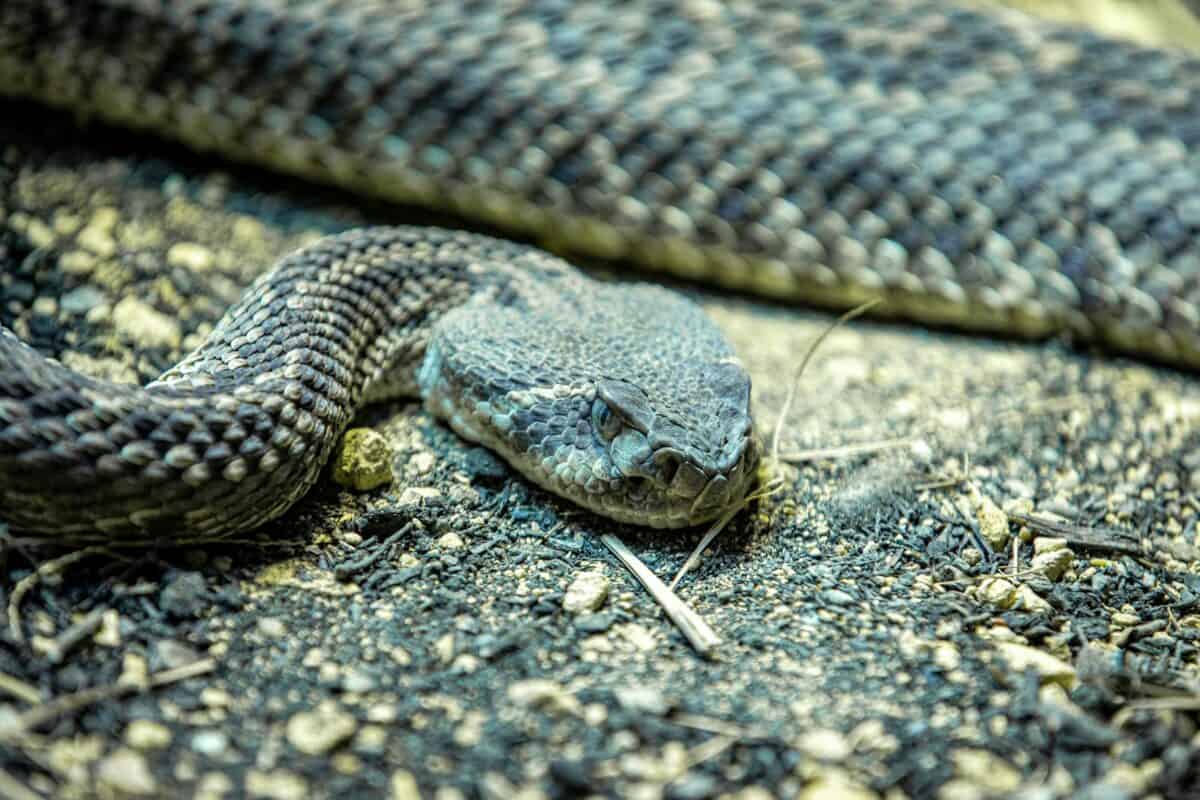
Venomous snakes play an integral role in maintaining the balance of their ecosystems. As predators, they control the population of their prey, such as rodents and insects, which in turn influences the spread of vegetation and disease. Additionally, they serve as prey for larger animals, thus contributing to the food web. Understanding and respecting these misunderstood creatures is vital for conserving biodiversity and ensuring the health of our planet’s ecosystems.
Conclusion:

The world of venomous snakes is as captivating as it is daunting. These serpents, with their diverse habitats and potent venoms, highlight the complexity and beauty of nature’s adaptations. While they can pose threats to humans intruding into their habitats, they are not monsters but essential components of their environments. By appreciating their roles and respecting their space, we can coexist with these remarkable reptiles that have thrived for millions of years.
- 11 Signs a Rhino Is About to Charge - August 9, 2025
- 10 Common Chicken Behaviors and What They Mean - August 9, 2025
- 14 Creatures That Can Freeze and Thaw Back to Life - August 9, 2025

